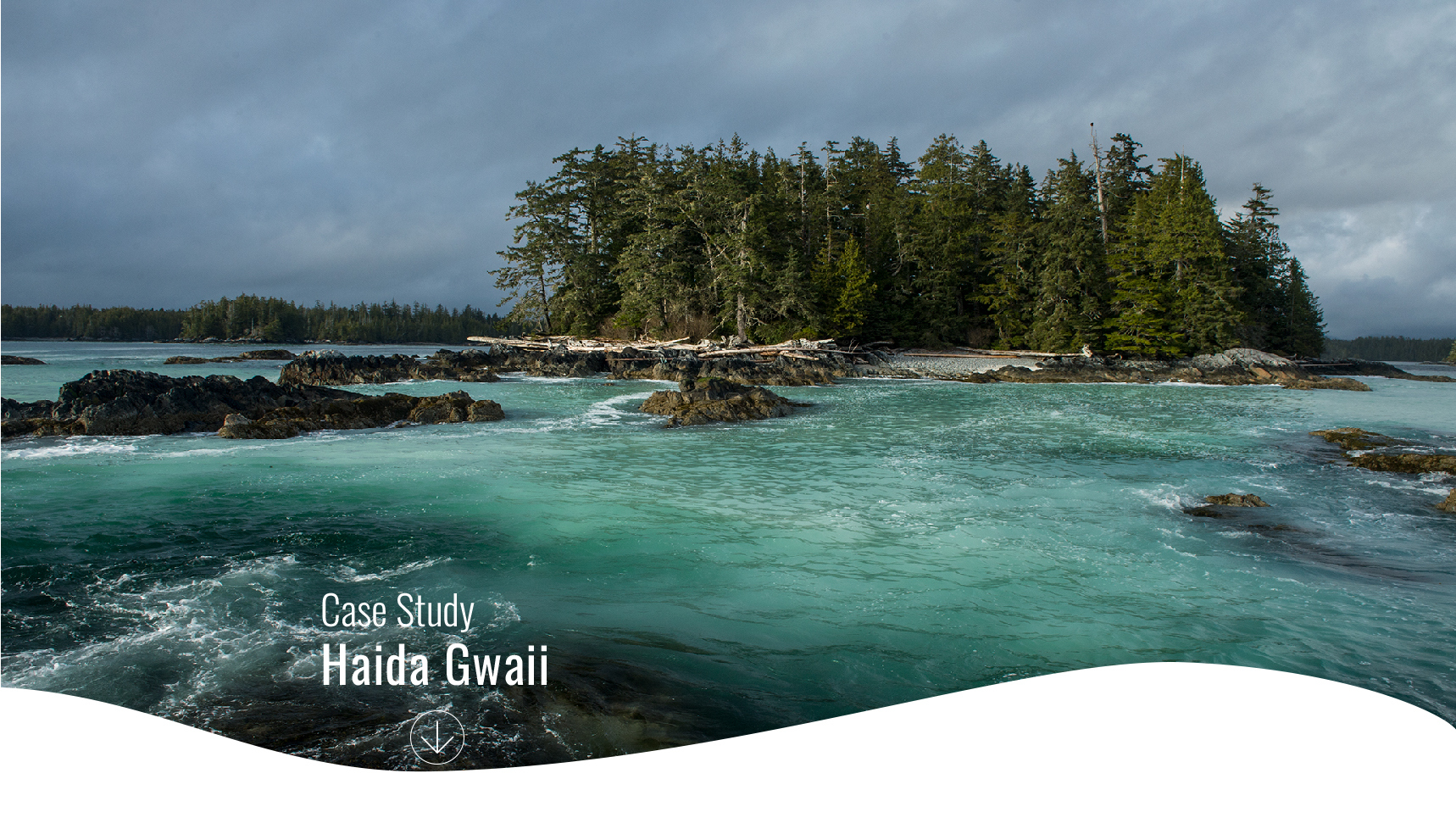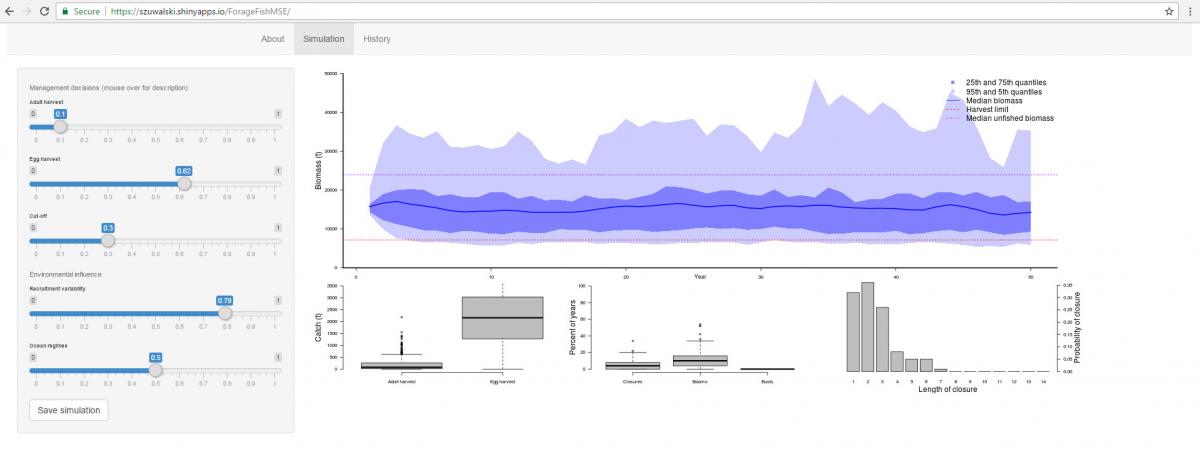Evaluating tradeoffs – adult vs. egg harvest
Balancing ecosystem constraints and user needs and values necessarily requires managers of coupled social-ecological systems to evaluate trade-offs among stakeholders. In fisheries, operationalizing ecosystem-based management requires that we confront allocation issues not only among fisheries sectors, but also to the ecosystem. Using a tipping points lens helps managers identify the safe operating space for decisions based on ecosystem targets and people’s preferences and risk tolerances.
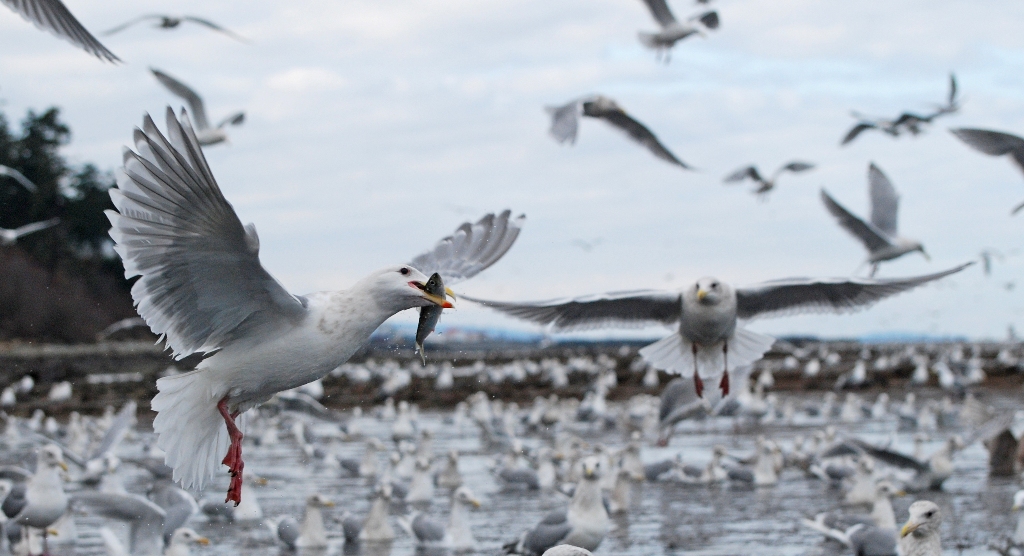
Pacific herring are emblematic of the need to evaluate trade-offs among alternative forms of exploitation and conservation goals. In Haida Gwaii, Pacific herring are subject to at least two distinct fisheries: one that catches mature spawning adults for their eggs and another that harvests the eggs on kelp substrate after spawning occurs. In addition, natural environmental variation influences herring recruitment. Thus, assessing trade-offs should include evaluation of how this recruitment uncertainty can influence risk of fishery closures. Finally, managers of forage fish fisheries also are faced with accounting for ecosystem needs when determining appropriate harvest rates. To address these trade-offs, our team developed a stochastic, age-structured model to investigate the consequences of egg- and adult-harvest on herring populations, fisheries, and conservation of herring predators (e.g., seabirds).20 We examine how different combinations of harvest intensity affect herring biomass in relation to species-specific biomass thresholds and ecosystem thresholds in the form of herring biomass needed to support predators. Our approach provides a template to evaluate trade-offs between the two fisheries in terms of catch of adults and eggs, and includes risk to fisheries in terms of probability of fishery closures and the risk to ecosystems based on the dietary needs of predators that rely on herring stocks. We use Cury et al.'s "1/3 for the birds" rule of thumb to set a minimum threshold biomass to be left in the ecosystem for predators6. The model also incorporates environmental variation in climate drivers and variable population dynamics to understand a range of potential changes to herring populations that could occur with different harvest strategies.
We find that (a) there is a strong and asymmetric trade-off between the catch of adults and catch of eggs, where small changes in adult harvest can lead to large declines in mean egg catch but the effect of egg harvest on adult catch is relatively minor; (b) risk of fishery closure can change substantially under different recruitment scenarios where populations with high recruitment variability will decline below species-level biomass thresholds more frequently than populations with small recruitment variability; (c) many combinations of egg and adult-harvest rates can allow the herring fishery to remain open while at the same time maintaining average herring biomass above the ecosystem threshold intended to satisfy the needs of herring predators (Figure 6, Shelton et al. 2014).
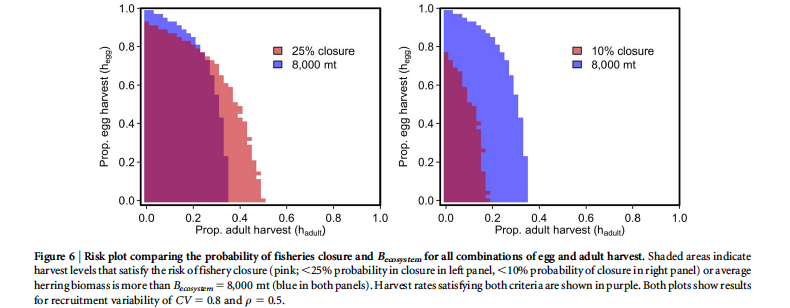
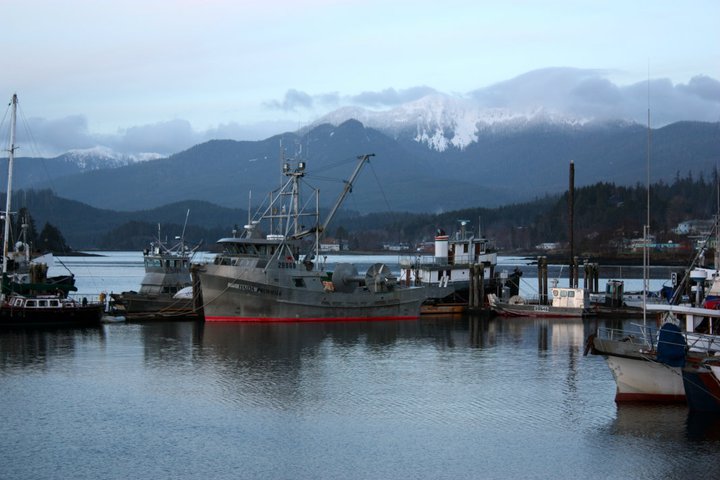 One of the most striking aspects of our model predictions is that ecosystem thresholds proposed to ensure the persistence of herring predators do not necessarily pose more stringent constraints on fisheries than these fisheries pose on themselves via hypothetical, but realistic, management targets. Interestingly, a hypothetical management target that avoids fishery closures more than 10% of the time placed a stronger constraint on both adult and egg harvest rates than the ecosystem threshold. Thus, an important lesson from these analyses is that the safe operating space for fishermen and conservationists can be similar and can aid in facilitating management actions to ensure fisheries and ecosystem needs are met in the long-term. Our work highlights that safe operating spaces exist that will allow the maintenance of stock biomass at levels that facilitate the persistence of forage fish predators and forage fish fisheries.
One of the most striking aspects of our model predictions is that ecosystem thresholds proposed to ensure the persistence of herring predators do not necessarily pose more stringent constraints on fisheries than these fisheries pose on themselves via hypothetical, but realistic, management targets. Interestingly, a hypothetical management target that avoids fishery closures more than 10% of the time placed a stronger constraint on both adult and egg harvest rates than the ecosystem threshold. Thus, an important lesson from these analyses is that the safe operating space for fishermen and conservationists can be similar and can aid in facilitating management actions to ensure fisheries and ecosystem needs are met in the long-term. Our work highlights that safe operating spaces exist that will allow the maintenance of stock biomass at levels that facilitate the persistence of forage fish predators and forage fish fisheries.
Another novel aspect of this study is that we demonstrate a framework for integrating metrics that are socioculturally relevant with ecological and economic metrics. By focusing on fisheries closures, we evaluate potential management actions for different sectors (e.g., subsistence users vs. commercial fishermen), which may have different thresholds and risk tolerance.
Many decision contexts contend with trade-offs that are non-linear, and these types of analyses can provide a transparent and straightforward decision support tool to address such non-linearities. This model and its scenarios can highlight opportunities for collaboration and cooperation among different stakeholders and offers the chance to avoid unintended social and ecological consequences. To facilitate this collaboration, we have developed an interface based on the model that can be used in a participatory process with stakeholders to help identify stakeholders’ risk tolerances and preferences for different fisheries management decisions.
This decision tool allows stakeholders to explore the models we developed and change environmental parameters, biomass thresholds, and harvest rates to evaluate risk of fisheries closures and catch rates for herring adults and eggs. This will allow for information exchange and help decision makers and stakeholders work together to strike a balance between the competing needs of multiple stakeholders and species in the face of tipping points.
To find out more, see our research paper, and check out our Decision Tool.
